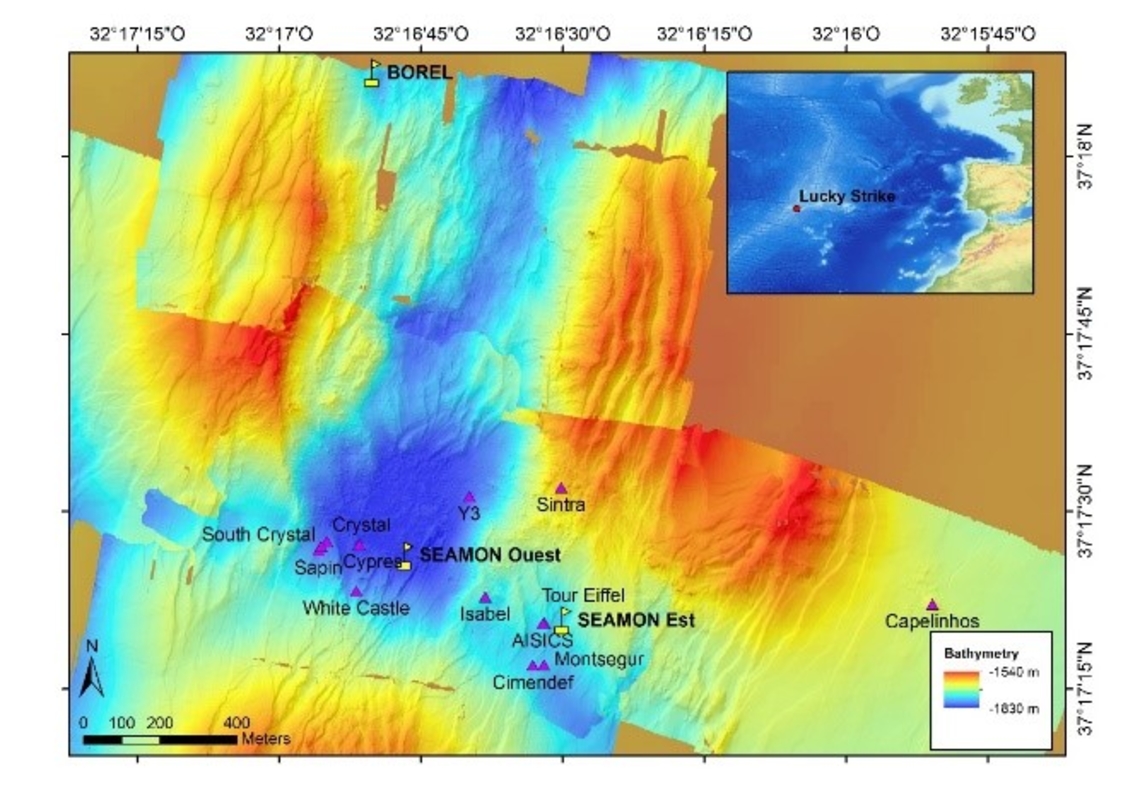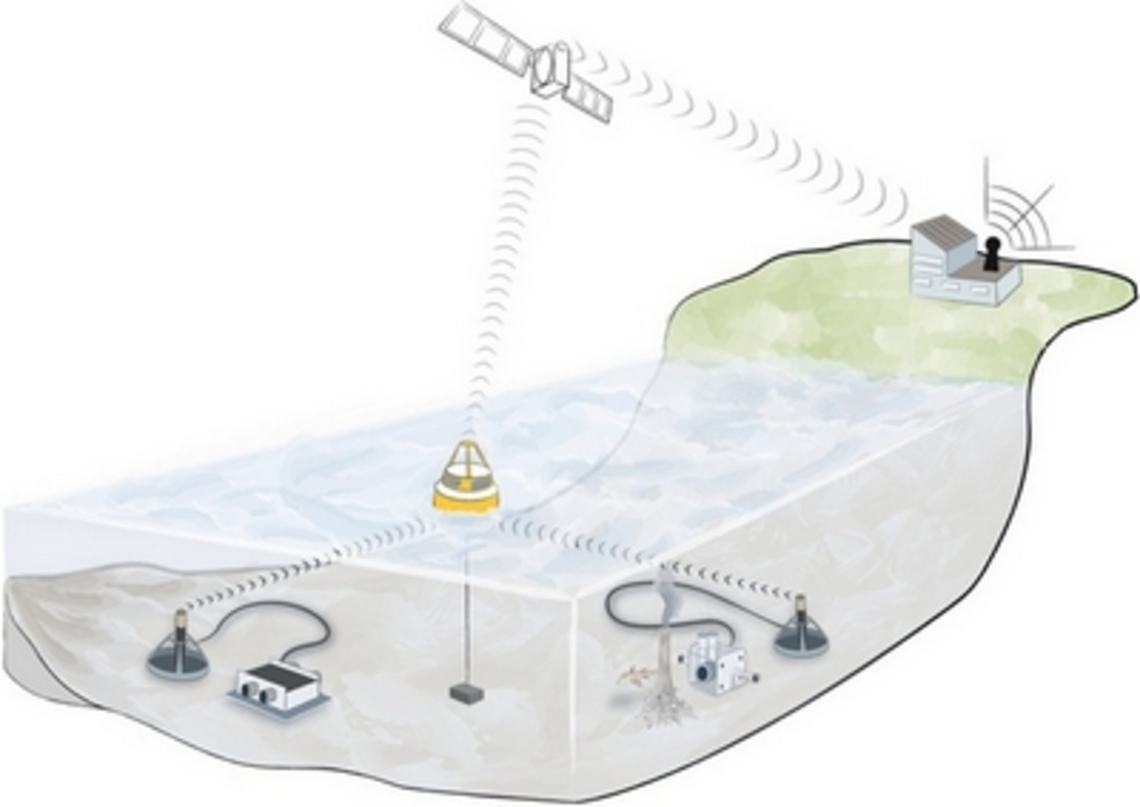EMSO-Azores deep sea observatory
EMSO Azores regional facility is set atop an active volcano which hosts one of the largest active ridge hydrothermal vent sites of the Mid-Ocean ridges.
The sensors are ranging from the seafloor, to the water column and the surface. The infrastructure comprises two seabed observing units called SeaMoN East and SeaMoN West (SeaMoN standing for Sea Monitoring Nodes) acoustically linked to a surface relay buoy named BOREL, a mooring and numerous autonomous sensors.
SeaMoN West, dedicated to large-scale geophysical studies, is installed in the center of a fossil lava lake characteristic of the Lucky Strike vent field. This seabed station serves an Ocean Bottom Seismometer (OBS) and a permanent pressure gauge (JPP).
SeaMoN East is deployed at the base of the Tour Eiffel active edifice to study the relations between faunal dynamics and physico-chemical factors. This node is equipped with a HD video camera, 4 LED lights, 2 oxygen sensors, a turbidity meter, an in situ Fe chemical analyzer and a thermistor chain. The seabed stations are powered on batteries.
The buoy BOREL ensures the bi-directional satellite communication with the land base station: scientific and technical data (including snapshots) are transmitted 4 times a day to the Data Centre in Brest. The buoy hosts a weather station, a geodetic GPS, an acoustic transducer for contribution to Ocean Tracking Network. The buoy is powered by solar panels coupled to rechargeable batteries.
In addition, the regional facility includes autonomous instruments among which 4 OBS, an oceanographic mooring, autonomous current meters and a array of temperature probes.
EMSO Azores has been operating since 2010. Every year, the maintenance campaign MoMARSAT is carried out to ensure the calibration and replacement of sensors, the complete data sets retrieval, the infrastructure updates and maintenance, and the energy replacement. The program of the campaign includes exploration and monitoring activities: video surveys, sampling of rocks, water and organisms, colonization and perturbation experiments...
Over the time, the sensor collection was widely enriched. A major step forward was carried out in 2016-17 with the complete refurbishment of the equipment. The second generation of electronic core operating the seabed stations and the buoy, COSTOF2 replaced the previous equipment. The observing capacity was doubled and a series of new sensors was deployed including a video camera with improved image quality, a 100 thermistor string, a chlorinity sensor (BARS) and 4 Ocean Bottom Hydrophones (Hydroctopus) forming an array with 70 m aperture dedicated to seismology monitoring. At the same time, a monitoring line dedicated to corrosion experiments was welcomed in the field of FixO3 Trans National Access, and EMSO Azores was selected for the first deployment of EGIM prototype, EMSO Generic Instrumental Module in deep sea within the project EMSODEV.
← Read the 10 success stories published to celebrate 10 years of monitoring on EMSO-Azores → |
Reference
Legrand Julien, Sarradin Pierre-Marie, Cannat Mathilde, The Emso Azores Regional Team (2019). EMSO Azores Deep-sea Observatory : 9 years of operations . EGU General Assembly 2019. 7-12 April 2019, Vienna. https://archimer.ifremer.fr/doc/00489/60087/
Lantéri N, Ruhl HA, Gates A, Martínez E, del Rio Fernandez J, Aguzzi J, Cannat M, Delory E, Embriaco D, Huber R, Matabos M, Petihakis G, Reilly K, Rolin J-F, van der Schaar M, André M, Blandin J, Cianca A, Francescangeli M, Garcia O, Hartman S, Lagadec J-R, Legrand J, Pagonis P, Piera J, Remirez X, Toma DM, Marinaro G, Moreau B, Santana R, Wright H, Dañobeitia JJ and Favali P (2022) The EMSO Generic Instrument Module (EGIM): Standardized and Interoperable Instrumentation for Ocean Observation. Front. Mar. Sci. 9:801033. doi: 10.3389/fmars.2022.801033



